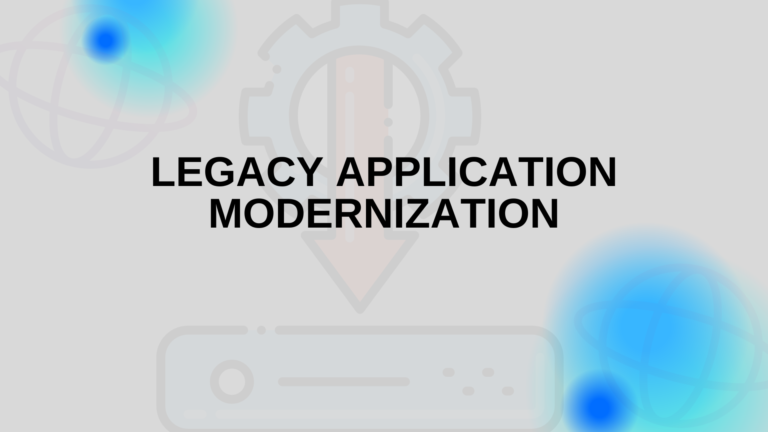
The digital payment landscape is evolving rapidly, and one of the most exciting trends reshaping how we pay for goods and services is the rise of QR code payments. As eWallets become a popular choice for consumers and businesses alike, integrating QR codes for seamless, secure, and contactless payments is becoming a must-have feature. In the USA, QR code payments are gaining significant traction, especially as the demand for contactless transactions has surged due to the pandemic and changing consumer preferences.
In this blog, we will explore the rise of QR code payments in eWallet app development in the USA, the benefits of this technology, and how working with an ewallet app development company and a mobile app development company in the USA can help businesses implement QR code payment solutions.
What Are QR Code Payments?
QR (Quick Response) codes are a type of barcode that can be scanned using a smartphone camera. They store information that can be quickly decoded and used for various purposes, including making payments. In the context of eWallet apps, QR codes allow users to make transactions by simply scanning the code, which automatically processes the payment from the linked bank account, credit card, or stored value in the eWallet.
When used for payments, QR codes can either be displayed on a merchant’s point-of-sale system (for customers to scan) or on a user’s mobile device (for merchants to scan). This versatile payment method eliminates the need for physical cards or cash, making it an ideal solution for a wide range of scenarios.
The Rise of QR Code Payments in the USA
While QR code payments have long been popular in countries like China and India, they have started to gain momentum in the USA over the past few years. The COVID-19 pandemic accelerated the adoption of contactless payment methods, and QR codes became an increasingly common sight at restaurants, retail stores, and even peer-to-peer transactions.
Several factors have contributed to the rise of QR code payments in the USA:
- The Shift to Contactless Payments: As consumers became more health-conscious and concerned about physical contact during the pandemic, contactless payments soared. QR codes provided a simple, secure, and hygienic way to pay without touching payment terminals.
- Widespread Smartphone Usage: With nearly every American owning a smartphone, the infrastructure for QR code payments is already in place. Users can easily scan codes using their built-in camera apps, making the technology highly accessible.
- Integration with eWallets: Many popular eWallet apps, such as PayPal, Venmo, and Cash App, have integrated QR code functionality, allowing users to quickly send and receive money. This feature enhances the convenience of eWallets and contributes to their growing popularity.
- Retailer and Business Adoption: Merchants in the USA have begun adopting QR codes for payments, recognizing the benefits of faster transaction processing, lower fees, and improved customer satisfaction. Restaurants, in particular, have leveraged QR code payments as part of a contactless dining experience, where customers can scan QR codes to view menus and pay their bills.
The Benefits of QR Code Payments in eWallet Apps
QR code payments offer several advantages for both consumers and businesses. Here’s a closer look at how they are transforming the payment experience:
1. Convenience and Speed
One of the biggest benefits of QR code payments is the convenience they offer. Customers no longer need to carry cash or cards, nor do they need to touch payment terminals. With a quick scan of a QR code, the payment is processed instantly through their eWallet app, making the entire transaction faster and more efficient.
For businesses, QR code payments reduce the time spent handling cash or cards, allowing them to process more transactions and reduce wait times for customers.
2. Lower Costs for Merchants
Traditional payment methods like credit cards often come with high transaction fees for businesses. QR code payments, on the other hand, can offer a more cost-effective solution. Many eWallets and payment gateways charge lower fees for processing QR code transactions, allowing businesses to save on payment processing costs.
Additionally, QR code payments do not require expensive POS terminals or hardware. Merchants can display QR codes on printed receipts or digital screens, making it a more affordable solution for small businesses and startups.
3. Enhanced Security
Security is a top concern for both consumers and businesses, and QR code payments offer a safer alternative to traditional payment methods. Since QR codes do not require customers to swipe cards or enter PINs, the risk of fraud is minimized.
Moreover, QR code payments are often backed by encryption and tokenization, ensuring that sensitive financial information is not transmitted during the transaction. The customer’s eWallet app securely processes the payment, reducing the likelihood of data breaches or fraud.
4. Seamless Integration with Loyalty Programs and Promotions
QR codes can do more than just process payments—they can also be integrated with loyalty programs, discounts, and promotions. By scanning a QR code, customers can automatically earn reward points or access special offers. This creates a more engaging shopping experience and encourages repeat business.
Businesses can also use QR codes to gather valuable customer data, enabling them to personalize future marketing efforts and enhance customer loyalty.
5. Universal Compatibility
Unlike some contactless payment methods that require specific hardware or payment terminals, QR codes are universally compatible. All that’s needed is a smartphone with a camera, which means almost anyone can use QR code payments. This accessibility makes it easier for businesses to cater to a wider audience, including tech-savvy customers and those who prefer a simple, quick payment method.
How eWallet App Developers Can Implement QR Code Payments
The rise of QR code payments presents a significant opportunity for businesses looking to enhance their eWallet offerings. By working with an ewallet app development company, businesses can develop custom eWallet solutions that integrate QR code payment functionality.
Here are the steps developers take to implement QR code payments in an eWallet app:
1. Create and Display Dynamic or Static QR Codes
In QR code payments, there are two main types of QR codes: static and dynamic.
- Static QR Codes: Static codes contain fixed information, such as a business’s payment address. Customers scan the code, enter the payment amount, and confirm the transaction. This type of QR code is ideal for small businesses and restaurants.
- Dynamic QR Codes: Dynamic codes are generated for each individual transaction and contain details such as the payment amount and merchant ID. Dynamic codes provide greater security and can be customized to include discounts, loyalty points, and other promotions.
An ewallet app development company can build the necessary functionality to support both static and dynamic QR codes, depending on the business’s needs.
2. Integrate Payment Gateways
To process QR code payments, the eWallet app must be connected to a secure payment gateway. Developers can integrate popular payment processors like PayPal, Stripe, or Square to ensure fast, reliable, and secure transactions.
Ensuring that the eWallet app complies with PCI-DSS standards is also critical to maintaining a secure payment environment. A mobile app development company in the USA can provide the expertise needed to build a secure and compliant payment solution.
3. Implement Security Measures
As with all payment technologies, security is paramount. Developers must implement end-to-end encryption, tokenization, and multi-factor authentication (MFA) to ensure that QR code payments are secure and that sensitive data is protected.
Real-time monitoring and fraud detection tools should also be integrated into the eWallet app to identify suspicious transactions and prevent fraudulent activity.
4. Enhance the User Experience
User experience is key to the success of any eWallet app. Developers must ensure that the process of scanning a QR code and completing a payment is simple, intuitive, and fast. Integrating additional features, such as loyalty programs or push notifications for successful transactions, can further enhance the customer experience.
Why Partner with an eWallet App Development Company?
The success of QR code payments in eWallet apps depends on expert development and seamless integration. By partnering with a specialized ewallet app development company, businesses can ensure that their apps are equipped with cutting-edge payment features, security measures, and a smooth user experience.
Additionally, working with a mobile app development company in the USA can help businesses tailor their eWallet solutions to the needs of the American market, ensuring compliance with financial regulations and payment standards.
Conclusion
The rise of QR code payments is revolutionizing eWallet app development in the USA, providing a fast, convenient, and secure way for consumers and businesses to transact. As more retailers and consumers embrace this technology, businesses must consider incorporating QR code payments into their eWallet solutions to stay competitive.
Partnering with an experienced ewallet app development company and a mobile app development company in the USA can help businesses build secure, scalable, and user-friendly eWallet apps that leverage the full potential of QR code payments. By doing so, businesses can improve customer satisfaction, reduce transaction costs, and stay at the forefront of the digital payment revolution.















